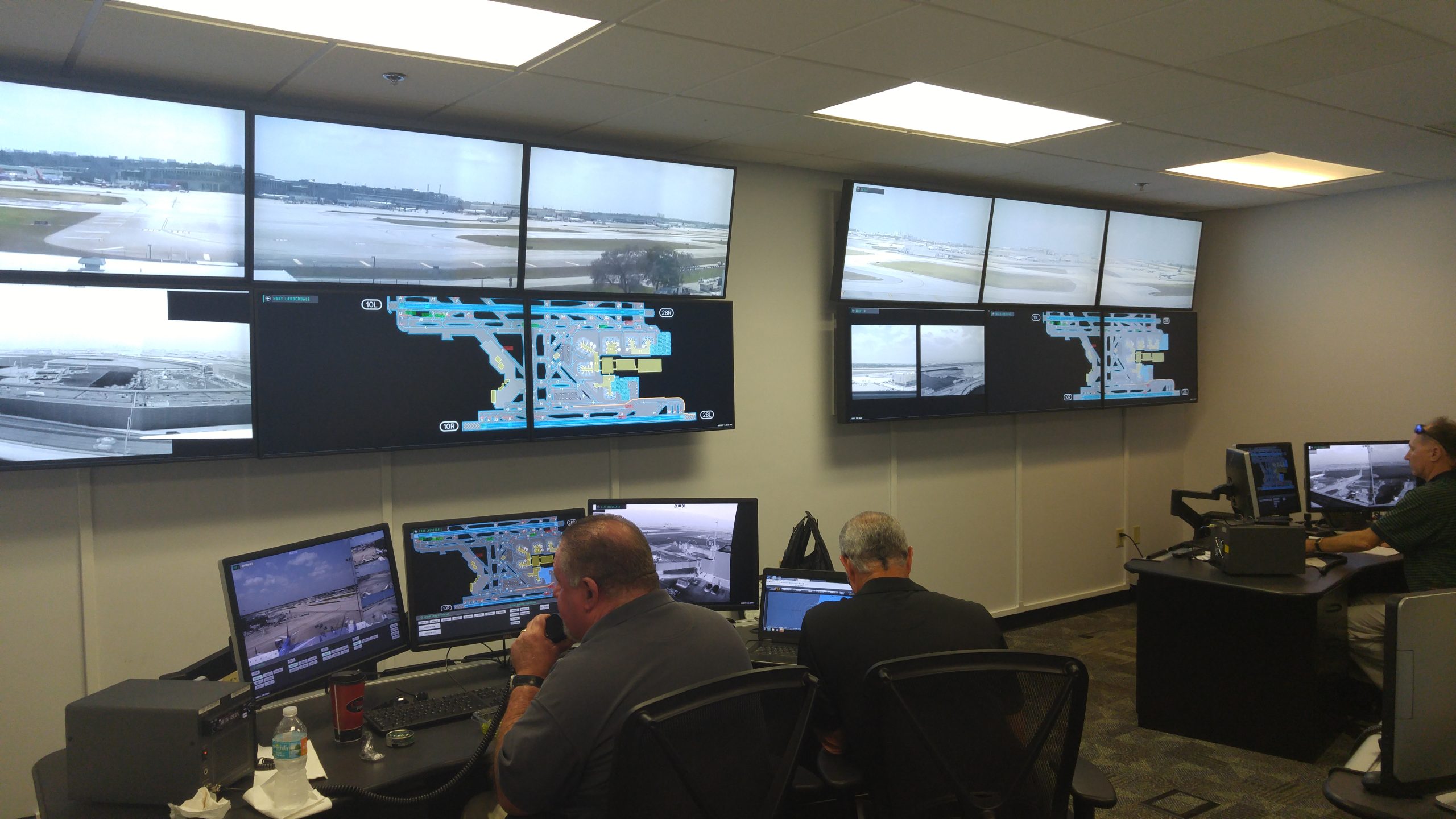Overview
What began as an abandoned nine-hole golf course in 1929 has evolved into one of the fastest-growing U.S. airports. Fort-Lauderdale International Airport (FLL) is currently on pace to enplane 30 million or more passengers by year-end.
Challenge
The expanding airport had two ramp traffic control towers, but not all the gates were visible. The airport had approximately 70% view of the airfield, therefore, depended on ground personnel to report the status of incoming and outgoing aircraft from the gates. Keeping track of gate status via a dry erase board. Given the airport’s high traffic and limited airside infrastructure, FLL typically has aircraft docked at every gate overnight, plus another 15 or so parked in two remote zones.
Solution
To address FLL’s challenges, Searidge Technologies installed their Virtual Ramp Control System (VRCS), which is used to more efficiently and safely direct aircraft to and from airport gates. Searidge’s VRCS stimulates an out -the-window view of geographically dispersed aprons, gates and aircraft parking areas into a workstation at a remote location. By replicating a tower-like window view for an off-site location, the system enhances situational awareness on the airfield. Searidge provided a mix of different kinds of sensors to give FLL visual access to every gate. The solution consisted of 50 closed-circuit, high definition (HD) video and thermal cameras placed around the tarmacs and taxiways, giving controllers the ability to see aircraft in any kind of weather, day and night, and move them from gate to gate faster. Through augmented reality thermal views and Pan Tilt Zoom (PTZ) controls, ramp controllers can now see into areas that were previously not visible.
Located in the operational control centre of the airport, the windowless room features 2 Controller Working Positions (CWPs)-one responsible for the North side of the airport, the other for the South side. Each workstation consists of a three-monitor interactive display, where operators control the PTZs and interact with the map; and a six-panel video wall that provides ground controllers with a panoramic view of the entire airfield–allowing them to monitor aircraft from the time they land until they pull into their assigned gate. Once at the gate, the Searidge software maintains on/off block status – providing real-time updates to ramp controllers via a 3D map and to the Flight Information Display System (FIDS)—through integration with the Airport’s Amadeaus Airport Operational Data Base (AODB).
Features
- Augmented reality
- Custom PTZ control
- PTZ preset positions
- Thermal views of all gates
- Redundant views
- North and South panoramic views from
- previous ramp control positions
- Integration with AODB, FIDS and ASDE-X
- On/Off block detection through
- Artificial Intelligence (AI)
- Aircraft video tags
Value
- Complete airfield view
- Analytics
- Collaboration
- Efficiency
- Safety
- Live gate status
- More accurate status to passengers (via FIDS)
- Centralize positions to one location= Cost
- savings from ramp tower rental
Customer’s Experience
FLL is the first airport in the United States to implement a Virtual Ramp Control System. Today, ramp controllers at FLL are relying on the Searidge VRCS to manage daily operations safely and efficiently from a remote location. Controllers now have full visibility of the airfield and initial results show a decrease in incidents of wingtip collisions and aircrafts going head to head.
“Our airport is land poor, and to create new multimillion-dollar towers for line of sight didn’t make sense,” explains Michael Nonnemacher, FLL’s acting assistant director of Aviation. “The Virtual Ramp Control program is a technological response rather than a traditional brick-and-mortar solution. Our ramp controllers can see the whole airfield from one room, which operates like an FAA Air Route center.”
As the airport continues to grow, the VRCS will allow maximum airfield efficiency and minimize congestion caused by the ongoing construction of the airport’s new runway and taxiways.


